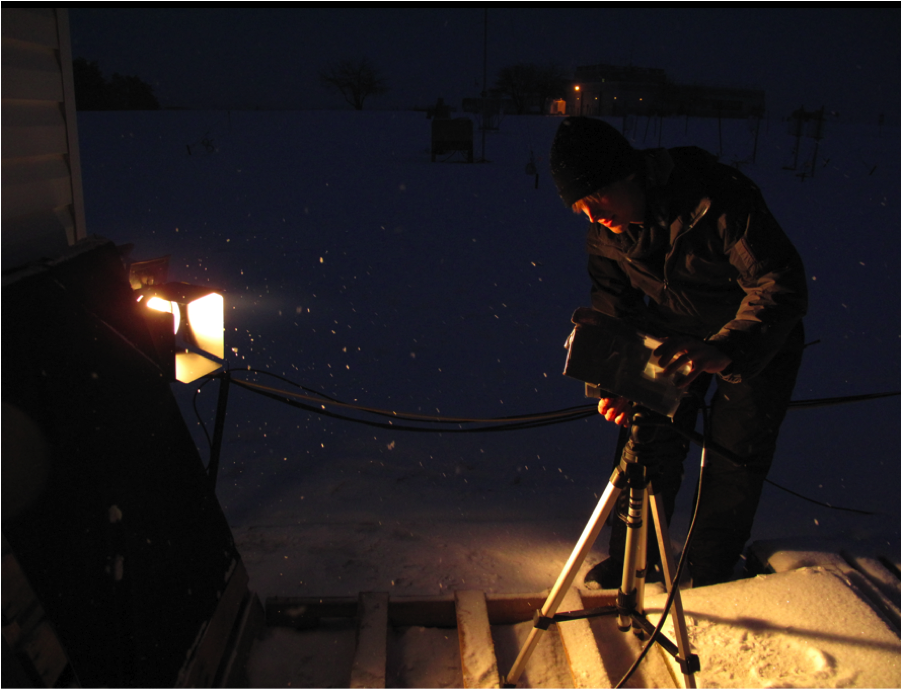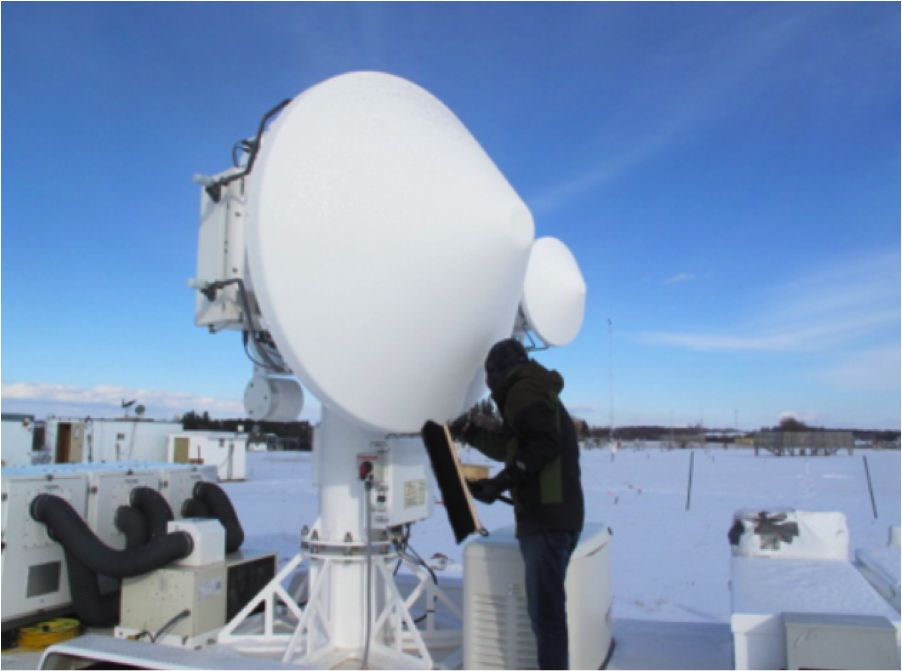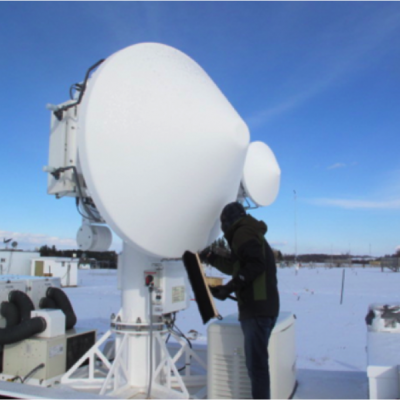Joe Munchak is a scientist at Goddard Space Flight Center who specializes in remote sensing of snow. This week he is at the CARE site in Ontario as one of the operations scientists for the GCPEx ground validation. It’s been a relatively eventful few days here in Barrie, Ontario, with two coordinated air-ground campaigns over the past three days. I was actually driving to Barrie from my home in Maryland during the first event (January 28th), and got to experience some lake effect snow bands first-hand in northern Pennsylvania on my way up. These were very narrow, only a few miles wide, but
Filming Snowflakes at GCPEx

Image Caption
Stephen Kelly of NC State films snowflakes next to the CARE trailer.
Cleaning Ice off the D3R at GCPEx

Image Caption
Vijay Mishra of Colorado State University cleans ice off the D3R radar.
GCPEx: What We Don't Know About Snow
GPM Deputy Project Scientist Gail Skofronick-Jackson discusses GPM's snowfall measurement capabilities and the challenges of measuring snow.
Video Text:


